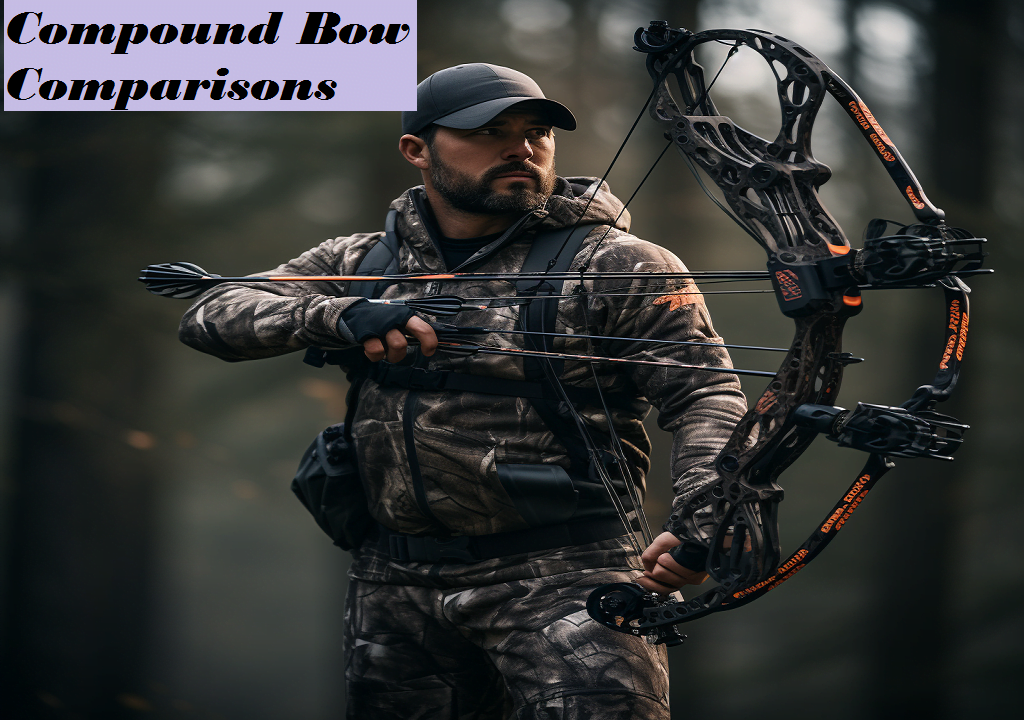Compound Bow Comparisons: Finding the Best Bow for You

Ah, the thrill of releasing an arrow and watching it fly! Archery is as old as civilization itself, and its tools have been perfected over millennia. Today, we’ll unravel the marvel that is the compound bow, delve deep into its intricacies, and guide you to the perfect bow.
Table of Contents
Table of contents
1. The Evolution of Bows: A Quick Look Back
Traditional vs. Compound Bow Comparisons
Traditional bows like longbows and recurves are simplicity at its finest – a bendy arc and a string. The compound bow, however? It’s where tradition meets technology.
How the Compound Bow Was Born
Holless Wilbur Allen, in the 1960s, reinvented the wheel. By incorporating pulleys into the design, he made archery accessible to many, without compromising on power.
2. Compound Bow Comparisons: Anatomy of a Compound Bow
The Riser: The Backbone
Constructed mainly from aluminum or carbon fiber, the riser is the non-bendy middle part. It provides stability and is where most of the other components attach.
Limbs: The Powerhouses
These are the bendy parts. Shorter than their counterparts in recurves, they store all the energy. Modern limbs are made from composite materials, making them robust and reliable.
The Cam System: A Game-Changer
This pulley system, generally at the end of the limbs, is the compound bow‘s defining feature. There are multiple types – single cams, hybrid cams, twin cams. Each has its perks, influencing draw cycle and speed.
3. Leading Brands: Who Reigns Supreme?
Hoyt: The Old Guard
Established in 1931, Hoyt has been at the forefront of archery innovations. They’re known for their durability and high-end designs.
Mathews: The Innovator
Founded in the 1990s, Mathews quickly became a market leader. Their bows are light, fast, and have a smooth draw cycle.
Bowtech: The Rebel
With patented technologies and diverse offerings, Bowtech bows cater to both beginners and pros.
PSE: The Speedster
Precision Shooting Equipment (PSE) is known for its speed. Their bows are often the go-to for those looking for a quick shot.
4. Making the Right Choice
Purpose: Hunting or Target Shooting?
While many bows serve both purposes, some are specialized. Target bows focus on accuracy over long distances, while hunting bows prioritize power and speed for a quick kill.
Draw Length and Weight: Customized to You
The bow should fit you like a glove. Measure your draw length, and pick a weight you can comfortably pull back.
Budget: A Bow for Every Pocket
From budget-friendly to bank-busters, there’s a bow for every price range. Remember, a higher price doesn’t always mean better quality.
5. Caring for Your Bow
Regular Maintenance: A Bow’s Best Friend
Inspect your bow frequently. Check for frayed strings, cracks, and ensure all parts are tightened.
Storage: Safe and Sound
Store in a cool, dry place. Use bow cases for added protection.
String Replacement: Better Safe than Sorry
Over time, strings wear out. Replace them periodically to maintain peak performance.
6. A Peep into the Future
Innovations: What’s Next?
From self-adjusting bows to smart technology integrations, the future looks promising.
Sustainability: Crafting Bows with a Conscience
Brands are now looking into sustainable materials and ethical manufacturing processes, ensuring that the sport remains green.
Conclusion
Compound Bow Comparisons: The compound bow, a marvel of modern archery, offers a blend of power and precision. With brands pushing the envelope and innovations on the horizon, there’s no better time to embark on your archery journey. Research, practice, and most importantly, enjoy the process.
FAQs
- Are compound bows suitable for kids?
Ans. Yes, with adjustable draw weights and lengths, many models cater to younger archers. - How often should I replace arrows?
Ans. Depending on use and wear, arrows might last a season or several years. Always inspect before use. - Do I need special tools for maintenance?
Ans. A basic bow toolkit suffices for most tasks. For major repairs, consult a professional. - What’s the average lifespan of a compound bow?
Ans. With proper care, a compound bow can last decades, though technology advancements might outpace its relevance. - How do weather conditions affect my bow?
Ans. Extreme temperatures can affect bow performance. It’s advisable to acclimate the bow to outdoor conditions before shooting.







